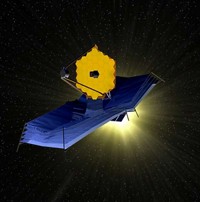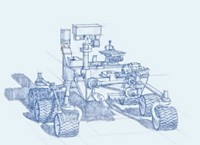Advertisement
Grab your lab coat. Let's get started
Welcome!
Welcome!
Create an account below to get 6 C&EN articles per month, receive newsletters and more - all free.
It seems this is your first time logging in online. Please enter the following information to continue.
As an ACS member you automatically get access to this site. All we need is few more details to create your reading experience.
Not you? Sign in with a different account.
Not you? Sign in with a different account.
ERROR 1
ERROR 1
ERROR 2
ERROR 2
ERROR 2
ERROR 2
ERROR 2
Password and Confirm password must match.
If you have an ACS member number, please enter it here so we can link this account to your membership. (optional)
ERROR 2
ACS values your privacy. By submitting your information, you are gaining access to C&EN and subscribing to our weekly newsletter. We use the information you provide to make your reading experience better, and we will never sell your data to third party members.
Astrochemistry
Sending mass specs to Mars
Mini mass specs are key components of Mars rovers
by Celia Henry Arnaud
May 29, 2018
| A version of this story appeared in
Volume 96, Issue 22

When studying the molecules on planets and other celestial bodies in outer space, scientists don’t know what they’re going to find. So they need to send analytical instruments on rovers and other space vehicles that can handle samples of unknown composition. Mass spectrometers fit the bill. And because power is limited and equipment space is at a premium on satellites and rovers, any mass spectrometer along for the ride should be small.
Mass spectrometers have been heading to Mars since the 1970s, when the Viking mission flew with an instrument containing an old-school magnetic-sector mass analyzer that could sort and separate ions over a range of mass-to-charge ratios (m/z) from 12 to 220. Miniature mass specs have come a long way since then. The Mars Organic Molecule Analyzer, or MOMA, will contain a miniature mass spec and will join a suite of other instruments on the European Space Agency’s ExoMars Rover, scheduled to launch in 2020. Researchers at NASA’s Goddard Space Flight Center have designed the mass spec, which consists of a linear ion trap with a mass range of up to m/z1,000.
With the ion trap, “we can do more advanced experiments” than previous types of mass specs sent to space were able to do, says Ryan Danell, a consultant working with the Goddard team. The researchers can run a tandem mass spec experiment, dubbed MS/MS, “which allows us to fragment a given ion and look at the product ions,” Danell says. MOMA will be the second ion-trap mass spec in space, he adds. An ion trap previously flew on the Rosetta mission, which landed on a comet.
MOMA will also include a gas chromatograph and electron ionization. But it will also be able to use laser desorption/ionization. Electron ionization is an energetic method that often results in extensive fragmentation. In contrast, laser desorption/ionization induces less fragmentation because the laser beam’s interaction with the sample leads to rapid heating and subsequent volatilization.
“That allows us to sample a much higher mass range than before. It also allows us to look at more intact forms than you would get from electron ionization,” Danell says. There may be larger organics on Mars that previous instrumentation simply couldn’t see. MOMA’s ability to perform MS/MS will be key to their identification.
One challenge for miniature mass specs in outer space is that there are no opportunities for service calls. That means builders need to be sure that the equipment they use will work under all conditions at the destination. “NASA is hesitant to use unproven technologies,” Danell says, so near-term space missions might not have the latest, greatest technology.
“With space-based missions, you’re required to lock in your requirements and your design very early in the process,” Danell continues. Even if NASA scientists learned something about their equipment right now that would improve it for the 2020 mission, there’s no time to go back, redo the design, and get it on board, he says. Whatever they learned while designing and building MOMA will have to wait for some future mission.
Advertisement
One thing that’s already in the works for MOMA 2.0 is the ability to analyze both positive and negative ions. MOMA itself is limited to detecting positively charged ions. Some target molecules have stronger signals in negative-ion mode. And some may not produce any signal in positive-ion mode.
“We now have a well-proven design that we could apply to future missions” for creating and analyzing both types of ions, Danell says.
One thing miniature mass specs have on their side while on Mars is lower atmospheric pressure—it’s only about 1% of that on Earth. So the vacuum system required to bring the mass spec down to low pressures for optimal performance won’t need to work as hard, Danell says. MOMA’s vacuum system consists of a single turbomolecular pump that is about the size of a 12-oz (355-mL) soda can. At other planetary destinations, extremely low pressures might not even require a pump.
However, some destinations in outer space, like Saturn’s moon Titan, have such high pressures that miniature mass specs will need vacuum systems similar to those used on Earth that pump down in multiple stages. But Titan’s high pressure also makes it easy for rotary-propelled drones to fly from place to place on its surface. The Goddard team that’s building MOMA’s mass spec is already designing one for Dragonfly, a mission still in the concept stage that aims to send a quadcopter “rover” to Titan.





Join the conversation
Contact the reporter
Submit a Letter to the Editor for publication
Engage with us on Twitter